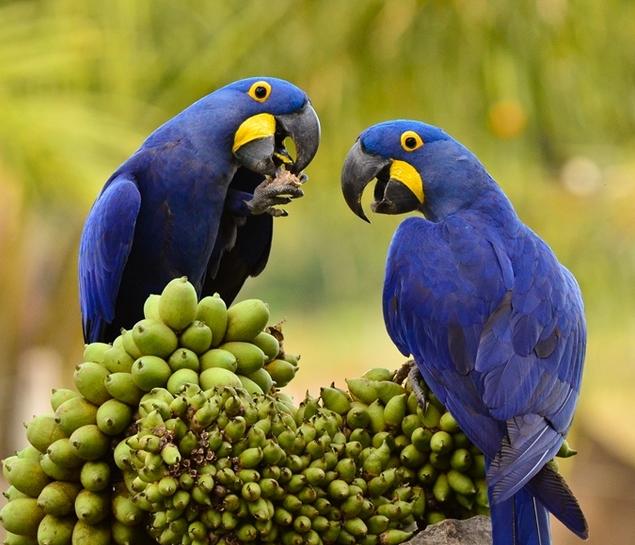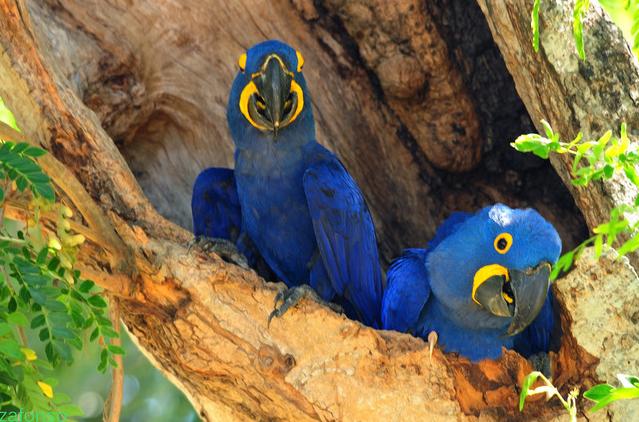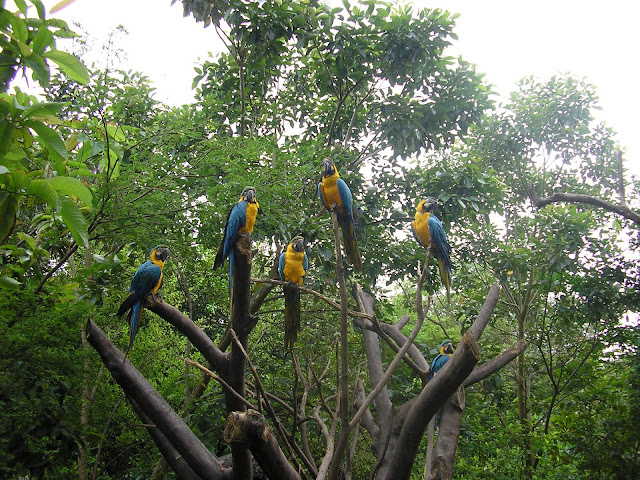




The blue Hyacinth Macaw inhabits South America. Its natural habitat range includes eastern
Bolivia, northern Paraguay and much of Brazil, from the Amazon, the Tapajós River to the south
at the river mouth in Maranhão to the region south of Mato Grosso and Mato Grosso do Sul.
Notwithstanding, this variety has not being seen in the whole area. Their numbers were
severely reduced due to indiscriminate hunting to supply the pet market trade. It is estimated
that in the early 1980 ‘s, about 10,000 Blue Macaw’s were caught disappearing entirely in
Paraguay.
Today, at the end of 2002, we are seeing an increase in quantity thanks to the work
of the Brazilian wildlife preservation team. However, it’s still considered as a seriously
threatened specie. According to McGrath (2002) is estimated that a total Blue Macaw
population out in nature is approximately 6,500, which is very successful, since according to
Sick (1993), in 1988 the quantity estimated was to exceed 2,500. We are unsure if they have
returned to their usual living area in Paraguay, nor we know about their population in Bolivia
either.
The Blue Macaws lives in the jungles, in the vegetation openings where palms exist. You will
also see them in the gallery forests (forests that grow on the riverbanks), in the forest which is
not very humid, and groves of the plains like the wetlands (pantanal) of Brazil. Usually they stay
in pairs or small groups. These groups which a decade ago did not approximate ten, now they
are counting up to 2 dozen pairs. They have being documented from a elevation of 800
meters above sea level.
They place their nest in hollow trees, palms and cracks in the rocks, and accepts nest boxes
placed in the trees for preservation. They usually lay two eggs but it could be from one to three.
Incubation takes about 30 days. The young chicks leave the nest within two/three months of
birth, but remain with parents for another six months, learning how to survive. Once they get
independent from parents, there are groups of the same specie with which they integrate. This
birds become adults at age seven. Once a pair is formed the bond is for life. The estimated
longevity when living in the wild is about 50 years.
Their nutrition is based on large seeds complemented with fruits. This is the largest specie in the
Psittaciformes variety (parrots and their relatives). Its length is between 93 cm and one meter. It
weighs up to 1.5 kg. Both genders are similar, in fact, identical. To determine the gender, because
apparently macaws have their own system which works better, will be necessary to do blood
tests. Although according to McGrath (2002) in their nature habitat, after incubation period,
the females shows their tail feathers somehow bent, due to time spent in the nest. Otherwise,
the blood test is the only way we know for sure. The Blue macaw live in the Guaraní region






No hay comentarios:
Publicar un comentario